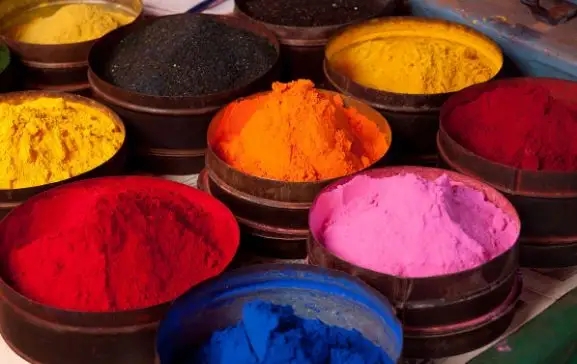1.Direct Dyes
The stability to heat of direct dyes is relatively good.
When melting direct dyes, it can be added soda soft water for helping solubilization.
Firstly, use cold soft water to stir the dyes to paste. And then add boiling soft water to dissolve the dyes. Next, add hot water to dilute it. After cooling, add water to the specified amount.
2.Reactive Dyes
Reactive dyes are not heat resistant. At high temperature, they are easily dissolved in water.
It can use cold soft water to stir the dyes to paste. And then use suitable temperature soft water to dissolve the dyes according to hydrolytic stability of different dyes. Next, add hot soft water to dilute it. After cooling, add water to the specified amount.
Low temperature type (X Type): Use cold water or 30~35℃ warm water (Has been largely phased out)
High temperature type (K Type and HE Type, etc.): Use 70~80℃ hot water
Medium temperature (KN Type and M Type): Use 60~70℃ hot water
For dyes with low solubility, please use 90℃ hot water.
3.Vat Dyes
The dissolution process of vat dyes is a process of reduction reaction.
When dissolving vat dyes, the dissolving temperature should be determined by the reducing condition of used reducing agent. For example, the commonly used reducing agent for vat dyes is sodium hydrosulfite. The optimal service temperature is 60℃. Too high temperature will lead to a lot of decomposition of sodium hydrosulfite.
4.Sulfur Dyes
Accurately weigh the required amount of dyes into the beaker and add cold soft water. Stir the dyes to paste. Then add the sodium sulfide dye liquor that has been dissolved in advance and boil it for 10 minutes. Next, add hot soft water to dilute it. After cooling, add water to the specified amount.
5.Disperse Dyes
When boiling temperature is too high, disperse dyes are easy to seed out.
When melting disperse dyes, they can be stirred to paste first by cold soft water. And then us cold soft water below 40℃ to melt the dyes. Then add water to the specified amount.
6.Acid Dyes
The stability to heat of acid dyes is relatively good.
Firstly, use cold soft water to stir the dyes to paste. And then add boiling soft water to dissolve the dyes. Next, add hot water to dilute it. After cooling, add water to the specified amount.
7.Cationic Dyes
The stability to heat of cationic dyes is relatively good.
Firstly, use acetum acerrimum (for helping solubilization) to stir the dyes to paste. And then add boiling soft water to dissolve the dyes. Next, add hot water to dilute it. After cooling, add water to the specified amount.
Post time: Nov-02-2022



